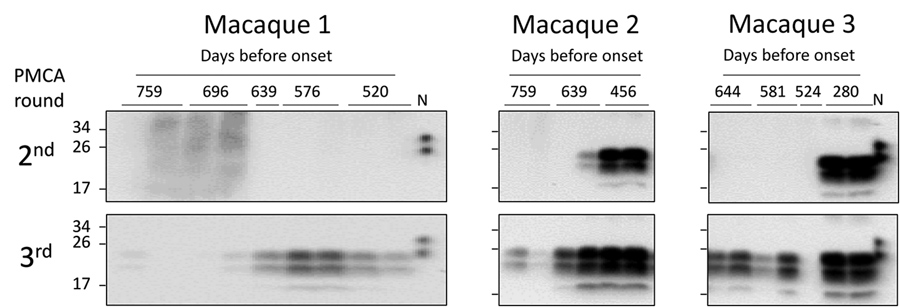Volume 26, Number 1—January 2020
Research
Preclinical Detection of Prions in Blood of Nonhuman Primates Infected with Variant Creutzfeldt-Jakob Disease
Figure 7

Figure 7. Detection of m-vCJD prions by PMCA in macaques during early stages of disease. These prions were probably endogenously generated rather than present in the inoculum. The second and third rounds of the PMCA-positive preclinical buffy coat samples were digested with 50 μg/mL of proteinase K and analyzed by Western blot. Samples were arranged from the earliest preclinical on the left to the closest to disease onset on the right. N refers to transgenic mouse normal BH without proteinase K treatment, which was used as a migration control. BH, brain homogenate; m-vCJD, macaque-adapted vCJD; PMCA, protein misfolding cyclic amplification; vCJD, variant Creutzfeldt-Jakob disease.
1Current affiliation: Amprion, Inc., San Diego, California, USA.